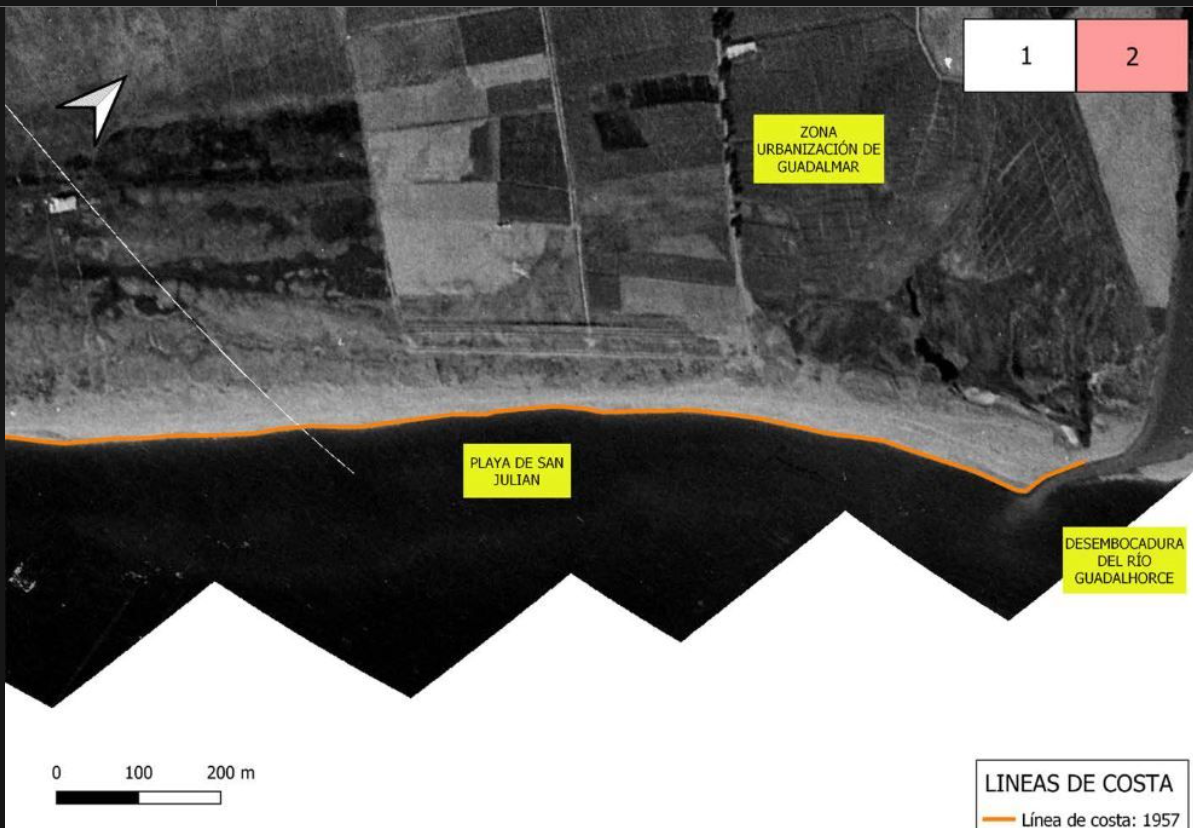BEACHES on the Costa del Sol are slowly disappearing due to climate change, land usage, and other human activities, reveals a series of striking photographs published in La Opinion de Malaga.
The satellite photographs are taken of Arraijanal beach in the Guadalmar area of the Malaga coastline and of Torre del Mar beach near Velez-Malaga between 1957 and 2023.
They show the sea advancing towards human developments, which has led the Andalucia Coastal Demarcation to declare the areas ‘at risk of serious regression,’ implying limits on future construction.
A ‘serious regression’ risk, as the report notes, indicates that the shoreline has retreated at least five metres per year for five years, and that it is unlikely the original shoreline can be recovered through natural processes.
According to the report, the Malaga coastline has lost some 200,000 square-metres of beach since the middle of the 20th century, with the most eroded sections of Arraijanal having lost an average of 7.26 metres per year between 2016 and 2022.
During this time period, much of the Malaga coastline has retreated between 20 and 45 metres, and since measurements began in 1957, some areas have retreated as much as 140 metres.
To compensate for the beach loss, authorities have been adding sand to the Arraijanal beach unit via pumping stations, the report notes, with some 16,000 cubic metres added in 2020.

A recent study conducted by the Malaga government attributed coastal erosion in recent decades primarily to disruption of the natural flow of sediment caused by ‘urban occupation of the beaches’ and ‘successive expansions of the port.’
Other factors include sand extraction from riverbeds for construction projects, the artificial regulation of rivers and construction of reservoirs, and large areas of coastline being removed entirely over the past few decades for the construction of highways and housing projects.
Additionally, breakwater from the thermal power plants along the Guadalhorce River and its tributaries – which empty into the ocean just south of Malaga – disrupts the natural flow of sand from the river to the surrounding beaches.
Coastal erosion has been widespread along the Costa del Sol for decades, with the Malaga government having documented the shoreline’s regression since at least the early 2000s.
The famous La Malagueta beach in Malaga city nearly disappeared entirely because of the construction of urban roads, and had to be rebuilt in the 1990s.

A government study from 2006 notes that some of the primary causes of coastal regression and the disappearance of beaches are ‘extraction of sand and gravel from the coast and channels,’ the ‘destruction and occupation of coastal strips by buildings and urban infrastructures,’ as well as the fact that erosion is ‘aggravated by the effects of climate change, rising sea levels,’ and ‘increasingly stronger and more frequent storms.’
Since the 2006 study, both the frequency and intensity of storms have increased, increasing pressure on the already stressed coastal geology, made vulnerable by increased human activity.
In the report, the Coastal Demarcation estimates an increase in storm intensity of up to four-times since the mid-late 20th century.
READ MORE
- Beach revival project almost finished but without promised promenade on Spain’s Costa Blanca
- Beach nourishment: Spain’s Malaga to receive 300,000 m3 of sand in effort to restore sand loss due to recent storms
Click here to read more Malaga News from The Olive Press.








